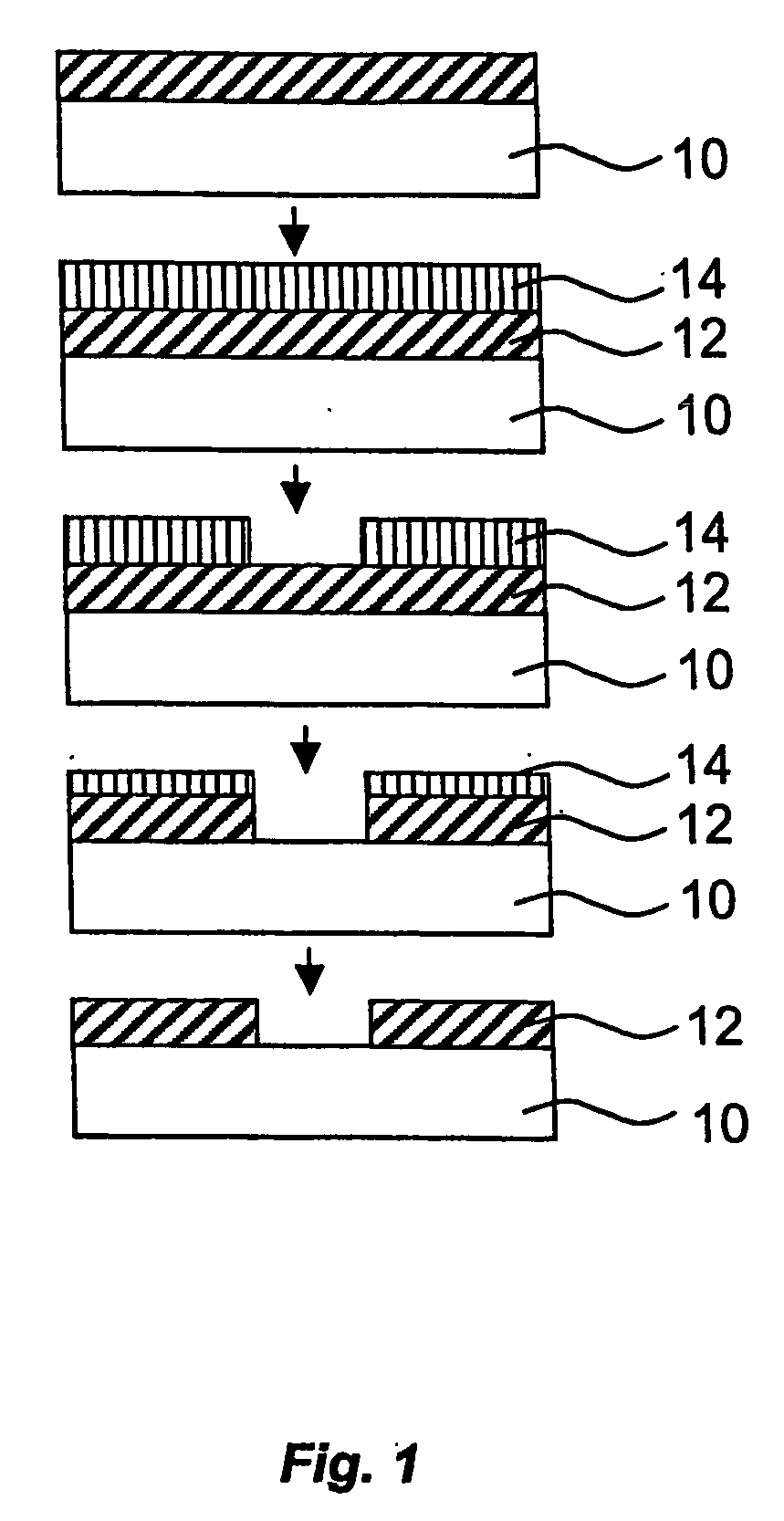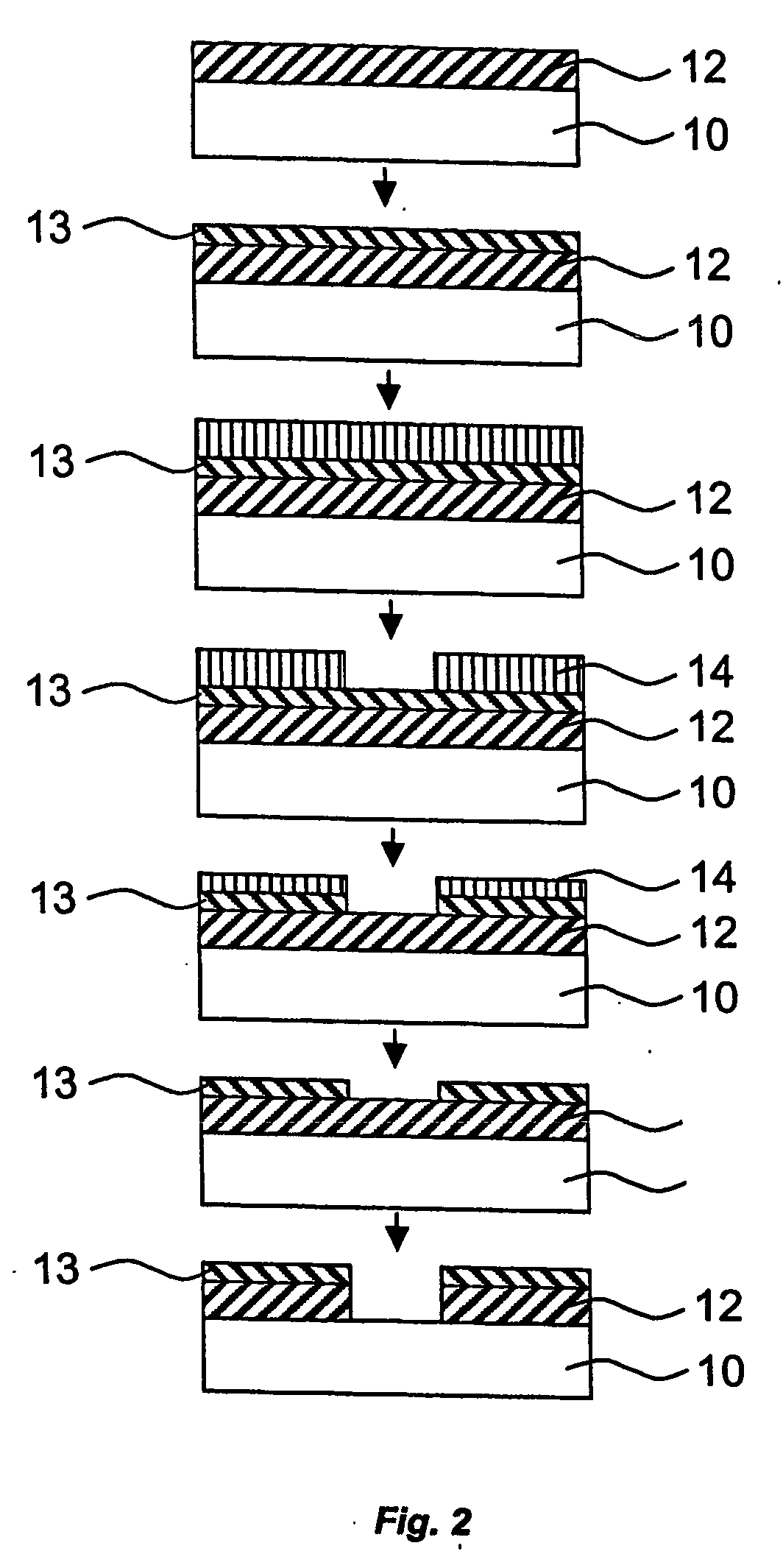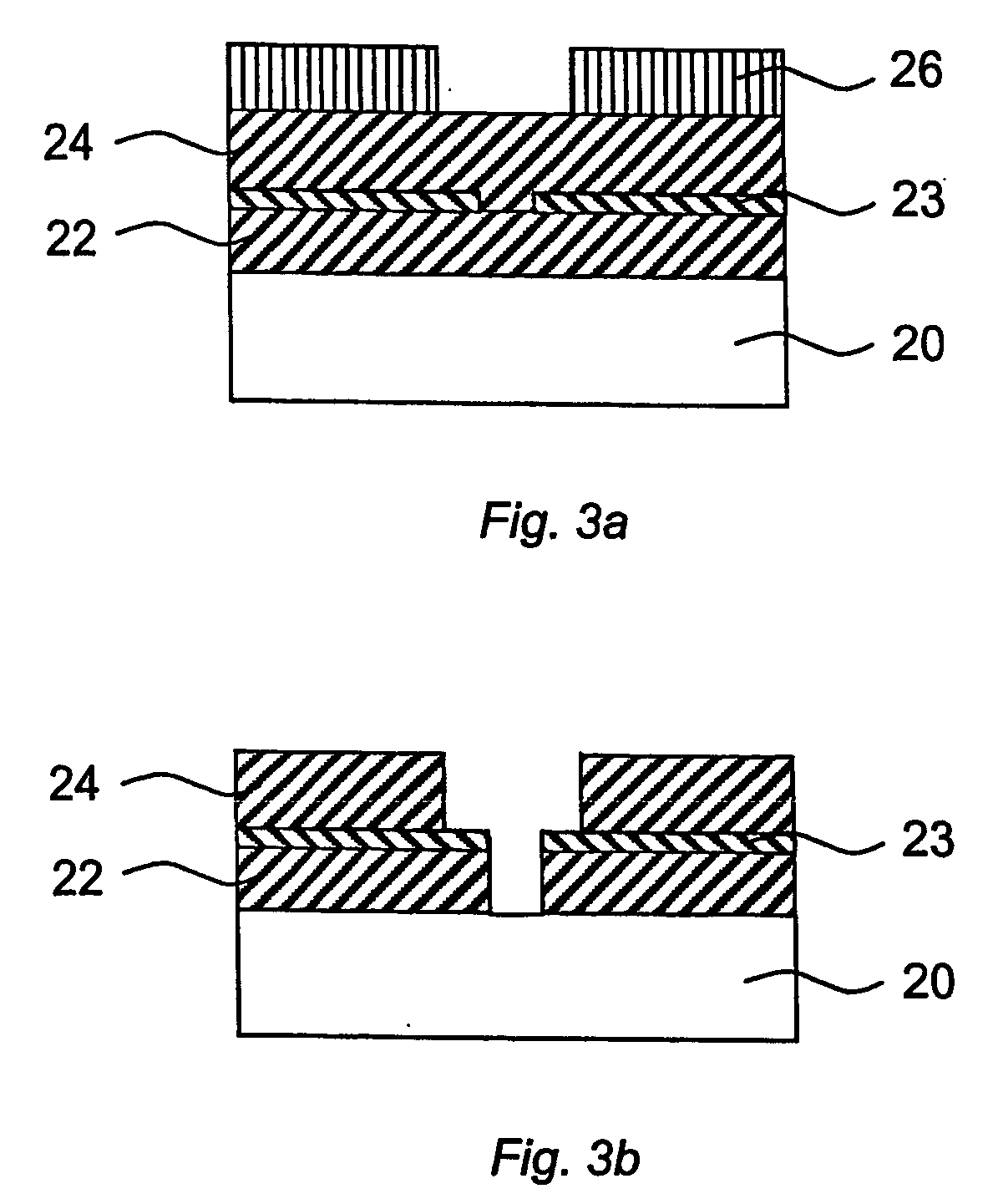Low-k dielectric material
a dielectric material and low-k technology, applied in the field of thin films, can solve the problems of reliability failure, increased softness, brittleness and cracking, and high cost of increased softness, and achieve excellent mechanical and thermal properties
- Summary
- Abstract
- Description
- Claims
- Application Information
AI Technical Summary
Benefits of technology
Problems solved by technology
Method used
Image
Examples
example a
[0109] In one embodiment, the present invention relates to a chemical vapor deposition (CVD) process and more preferably a plasma enhanced chemical vapor deposition (PECVD) process for forming a low-k dielectric thin film on a substrate, including the steps of: placing the substrate in a chemical vapor deposition apparatus, introducing at least one vaporized organosilicon precursor comprising at least one cleavable organic functional group into-the apparatus; transporting the organosilicon- vapor into a chemical vapor deposition zone containing a substrate, optionally using a carrier gas to effect such transport; contacting the organosilicon vapor with the substrate under chemical vapor deposition conditions to deposit a thin film comprising an organosilicon composition; and activating the organosilicon thin film to produce a low-k dielectric thin film. The activation step is carried out under conditions sufficient to effect the removal of at least a portion of the cleavable, organi...
example b
[0111] The materials are deposited as in example A and the formed films are further annealed at elevated temperatures in air, nitrogen, argon, forming gas or vacuum. The curing temperature is preferably higher than the deposition temperature in the deposition step described in the method A and can be as high as 600 deg C. but is not limited to that.
[0112] In this embodiment, the present invention relates to a chemical vapor deposition (CVD) process and more preferably a plasma enhanced chemical vapor deposition (PECVD) process for forming a low-k dielectric thin film on a substrate, including the steps of: placing the substrate in a chemical vapor deposition apparatus, introducing at least one vaporized organosilicon precursor comprising at least one cleavable organic functional group into the apparatus ; transporting the organosilicon vapor into a chemical vapor deposition zone containing a substrate, optionally using a carrier gas to effect such transport; contacting the organosi...
example c
[0114] The materials are deposited as in example A and the formed films are radiation exposed (UV, DUV, Extreme UV, IR or e-beam) prior to further treatments such as curing at elevated temperatures in air, nitrogen, argon, forming gas or vacuum or prior second layer deposition such as metal, barrier, liner or additional dielectric layer deposition, which can be either regular dielectric film, low-k dielectric film or high-k dielectric film. The exposed can be applied through a mask or reticle or alternatively in a flood exposure manner. The exposure step can also be followed by a development step or elevated temperature-curing step.
[0115] Thus, in addition to thermally and plasma-generated reactive intermediates, photon assisted precursor cracking is also part of this invention. Because specific chemical bonds have specific energies, and because these energies can be supplied as photons, electromagnetic radiation is a preferred method of practicing this invention.
[0116] According ...
PUM
| Property | Measurement | Unit |
|---|---|---|
| dielectric constant | aaaaa | aaaaa |
| dielectric constant | aaaaa | aaaaa |
| pressure | aaaaa | aaaaa |
Abstract
Description
Claims
Application Information
 Login to View More
Login to View More - R&D
- Intellectual Property
- Life Sciences
- Materials
- Tech Scout
- Unparalleled Data Quality
- Higher Quality Content
- 60% Fewer Hallucinations
Browse by: Latest US Patents, China's latest patents, Technical Efficacy Thesaurus, Application Domain, Technology Topic, Popular Technical Reports.
© 2025 PatSnap. All rights reserved.Legal|Privacy policy|Modern Slavery Act Transparency Statement|Sitemap|About US| Contact US: help@patsnap.com



